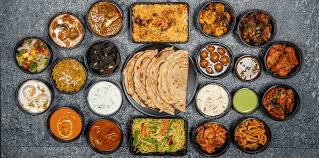Explore the rising popularity of Indian food across the world and how dishes like those on the Salt N Pepper Indian restaurant menu are creating a flavourful cultural impact.
The Popularity of Indian Food: A Global Culinary Love Story
Indian food is more than just a cuisine; it is a celebration of spices, stories, and centuries-old traditions. Across continents, it has made its way from humble home kitchens to upscale restaurants and bustling street markets, capturing the hearts and palates of millions.
What makes Indian food so irresistibly popular? It’s not just the bold flavors or the variety; it’s the cultural narrative each dish carries. From the vegetarian wonders of South India to the rich, creamy curries of the North, Indian cuisine is as diverse as the country itself.
Menus like the Salt N Pepper Indian restaurant menu reflect this variety beautifully, showcasing everything from sizzling tandoori platters to subtly spiced lentil dishes, drawing people from all walks of life into a shared love for flavor and culture.
A History Steeped in Flavor
The popularity of Indian food didn’t happen overnight. It evolved through centuries of trade, migration, and cultural exchange. Spices like turmeric, cumin, coriander, and cardamom were once so valuable that they were traded like gold. These spices not only flavored dishes but were also used in medicine and religious rituals, further deepening their cultural significance.
As Indians traveled and settled in various parts of the world, they carried with them their food traditions. What began as family recipes soon became neighborhood favorites, and eventually, global staples.
Diversity on the Plate
One of the key reasons Indian food enjoys widespread popularity is its diversity. The culinary landscape changes dramatically from region to region. A traveler moving from Punjab to Kerala might feel like they’ve entered entirely different culinary worlds.
- Northern India offers hearty dishes like butter chicken, naan, and biryani.
- Southern India is known for dosas, idlis, and coconut-infused curries.
- Eastern India brings in delicate flavors with fish curries and mustard-based gravies.
- Western India includes spicy snacks, savory rice dishes, and tangy chutneys.
This vast variety ensures that there’s something for everyone, whether you’re a spice-lover or someone with a milder palate.
Vegetarian-Friendly Choices
India has the largest population of vegetarians in the world, which has led to the development of a rich array of plant-based dishes. Lentils, chickpeas, paneer (Indian cottage cheese), and an incredible assortment of vegetables are all mainstays of the cuisine.
The rise of vegetarianism and veganism globally has brought renewed attention to Indian food, as it offers hearty, satisfying options that are entirely meat-free. A salt and pepper Indian restaurant menu often includes several such dishes, blending flavor and nutrition seamlessly.
Balanced Spices, Not Just Heat
Contrary to the popular belief that Indian food is always “spicy,” the true art of Indian cooking lies in its balance of spices, not just the heat. The flavors are layered—sometimes smoky, sometimes sweet, sometimes tangy—creating a symphony in every bite.
This subtle complexity is what often hooks people. One may begin with something mild, like butter naan with dal, and then gradually develop a taste for more intricate dishes involving fenugreek, asafoetida, or tamarind.
Global Embrace of Indian Cuisine
Walk into any major city across the globe and you’re likely to find at least one Indian restaurant. From New York to Sydney, London to Tokyo, Indian eateries are a common feature of urban culinary life.
This global reach isn’t just about expatriate communities—local populations have enthusiastically adopted Indian food as well. Cultural festivals, food shows, and cooking channels have further elevated its profile, sparking curiosity and admiration.
Even popular Western chefs now regularly incorporate Indian spices and techniques into their dishes, helping bridge the gap between Eastern and Western cuisines.
Fusion and Innovation
Indian cuisine has not remained static. Chefs and home cooks alike have embraced fusion cooking, marrying traditional Indian ingredients with other global flavors.
Dishes like Indian-style tacos, masala pasta, or butter chicken pizza may sound unconventional, but they are a testament to the adaptability of Indian food. Menus like the Salt N Pepper Indian restaurant menu often experiment with such blends, offering diners a chance to experience the familiar with a twist.
This spirit of innovation keeps the cuisine exciting and relevant, especially for younger generations.
Health and Wellness Appeal
With rising interest in holistic health, Ayurvedic principles found in Indian cooking are gaining global attention. Ingredients like turmeric, ginger, and garlic are praised for their anti-inflammatory and immune-boosting properties.
Traditional cooking methods also emphasize balance—between taste and nutrition, cooling and heating foods, carbs and proteins. These aspects make Indian food not just flavorful, but nourishing as well.
People are increasingly choosing Indian dishes not just for their taste, but also for their perceived health benefits, further adding to the cuisine’s popularity.
Cultural Experience Through Food
Dining at an Indian restaurant or enjoying a home-cooked Indian meal is often more than just a culinary experience—it’s a cultural immersion. The presentation, aromas, rituals like sharing from a communal plate, or eating with hands—all add depth to the meal.
For many, reading through a salt and pepper Indian restaurant menu is like reading a cultural storybook. Every dish carries a tale of its origin, preparation style, and the people who made it famous.
This sense of narrative, of connection through food, resonates strongly with those looking for more than just a quick meal.
Conclusion: A Cuisine That Connects the World
The popularity of Indian food is rooted in its diversity, adaptability, richness of flavor, and deep cultural resonance. From modest street stalls to luxury dining rooms, from homes in Mumbai to markets in London, Indian cuisine continues to evolve and expand its reach.
Menus like the Salt N Pepper Indian restaurant menu are reflective of this vast culinary heritage. They offer a peek into the Indian kitchen—a space where tradition meets innovation, and every meal is a celebration.



